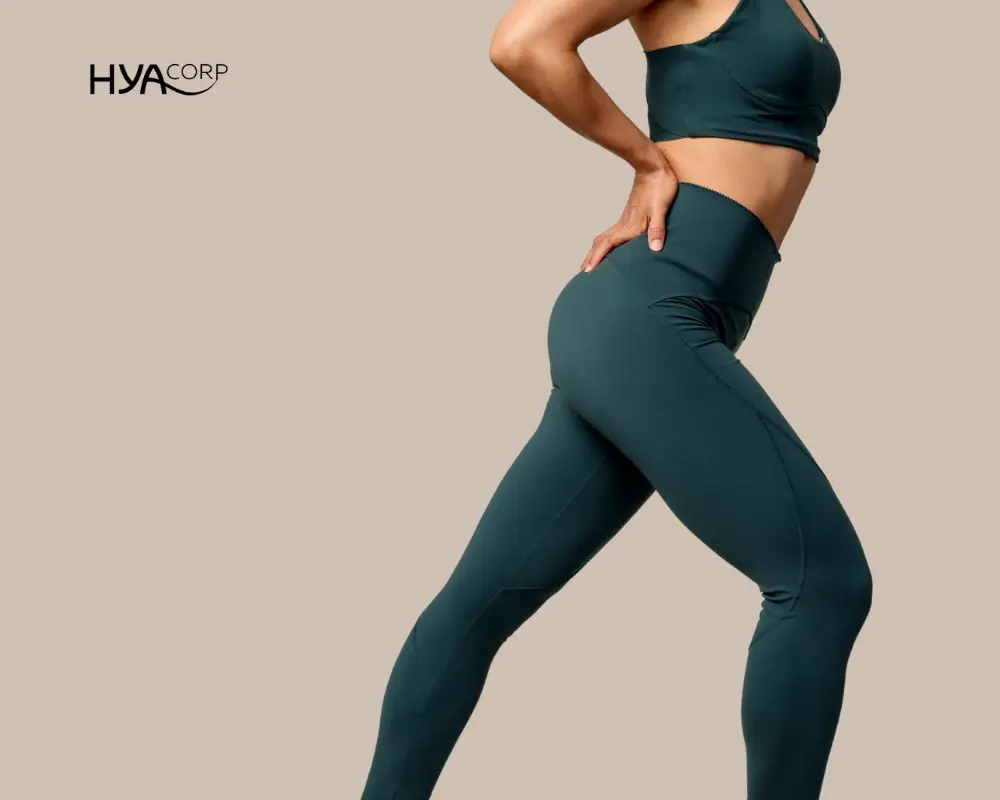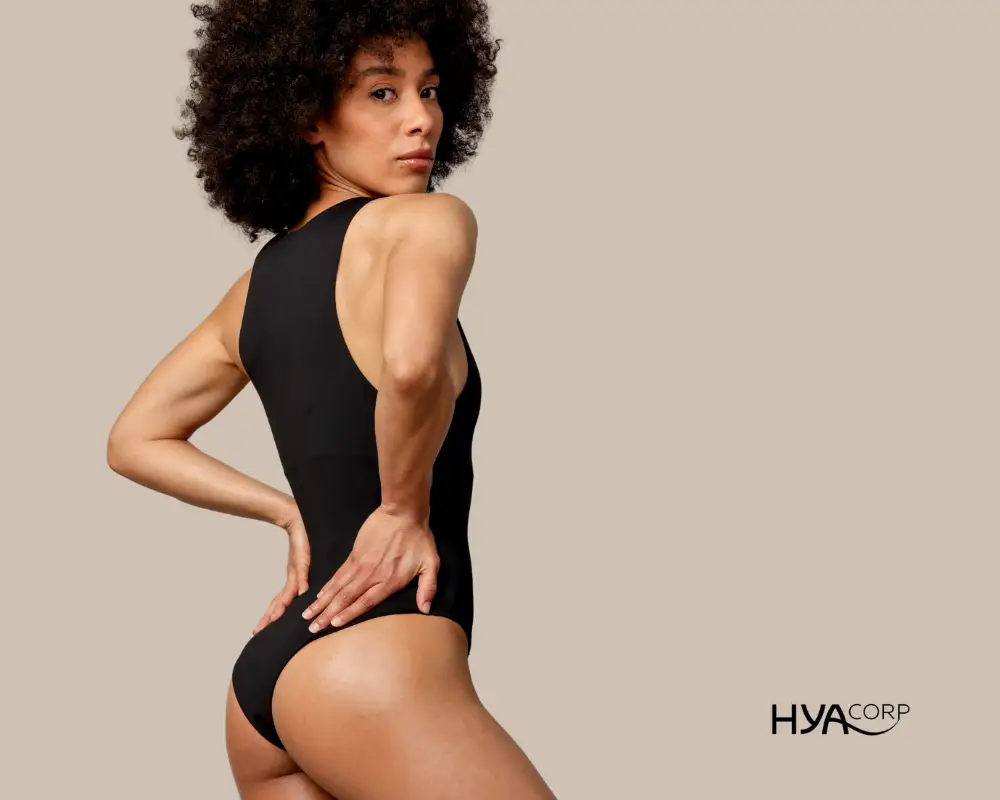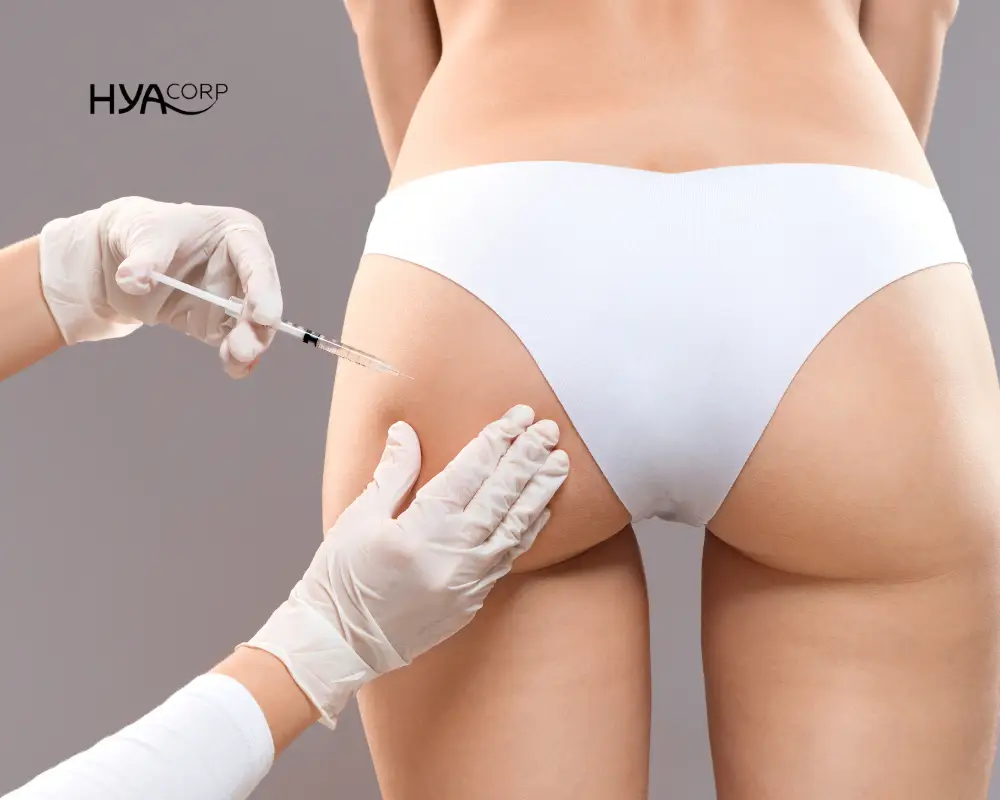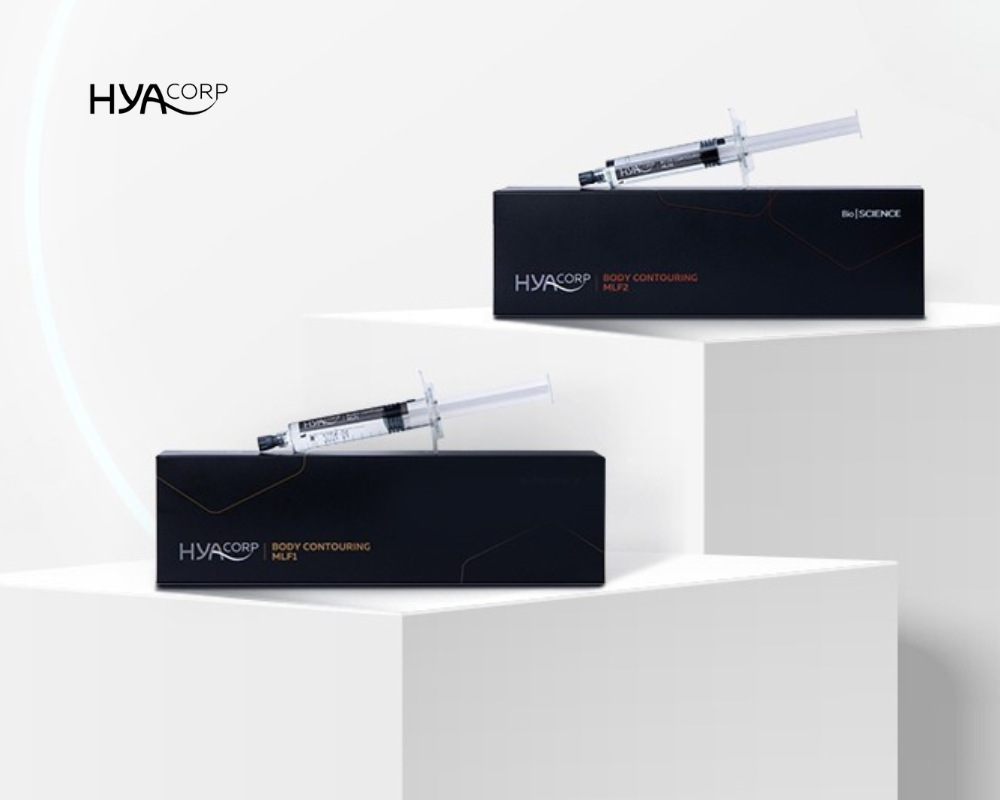Trying to get a sculpted, well-defined physique has always been a central goal in fitness for most. From hours spent in exercising and weight training to carefully structured nutrition plans being followed religiously, athletes and fitness enthusiasts put in an immense amount of effort. Building and maintaining muscle tone is not an easy task, but that doesn’t deter them from continuously working on it. Yet, despite all the dedication and effort, some areas of the body seem to remain resistant to change.
Genetics, age, hormonal shifts, or even personal health conditions all play a role in shaping how the body responds to exercise. This often leads to certain muscle groups remaining less defined than desired.
This gap between effort and results has given rise to a growing trend: the use of body fillers to enhance muscle definition.1 No longer limited to just aesthetics, hyaluronic acid-based fillers are now being embraced by fitness-conscious men and women seeking to refine their look without needing to resort to invasive and time-consuming surgeries.
Muscle Definition: More Than Just Strength
When people think about fitness, they often focus on strength, endurance, and overall health. But in today’s culture that is shaped by social media and high-definition cameras capturing your every angle, appearance also matters just as much. Muscle definition is about how visible and contoured muscles look under the skin, and for many, it represents the peak of their fitness journey, showing everyone the results of all their effort.
Contrary to popular (and perhaps outdated) beliefs, this is not just a man’s pursuit. Women are increasingly prioritizing sculpted physiques too, seeking toned calves, lifted glutes, and balanced proportions that align with their body goals. The desire isn’t always about achieving a “larger” look but rather about symmetry, proportion, and fine-tuning the areas that feel incomplete despite all their hard work at the gym.
Why Exercise Alone Doesn’t Always Deliver
Even the most disciplined training routines can’t always guarantee perfectly sculpted results. Many people, despite hours in the gym and carefully managed diets, find themselves frustrated when certain muscle groups refuse to respond in the way they want. This is particularly noticeable in areas like the calves, glutes, shoulders, and even the chest, where shape and definition often depend on more than just effort.
So why does this happen? A mix of biological and lifestyle factors often plays a role:
- Genetics: Some people are predisposed to have less pronounced muscle groups, regardless of how hard they train. Calves, for example, are famously resistant to growth for many.
- Hormonal Changes: As we age, natural hormone fluctuations impact how our bodies store fat and how visible muscle definition becomes. Even incredibly fit individuals may start to notice softer contours in their 30s, 40s, and beyond.
- Post-Weight Loss Volume Loss: Patients who have achieved significant weight loss often face a new challenge. While their fat has reduced, the skin and soft tissue may lack the volume or elasticity needed to highlight muscle tone. Instead of definition, they may be left with flatter or less balanced proportions.
- Injury or Health Conditions: Past injuries, joint issues, or medical conditions can limit the ability to train certain areas. This creates imbalances where one part looks less developed compared to others.
For patients, this can be disheartening given all the effort they put in. For doctors, it highlights the importance of recognizing that fitness outcomes aren’t purely the result of willpower or discipline, as biology and lifestyle can play a pretty significant role.
This is where non-surgical aesthetic medicine steps in to bridge the gap. Among the most trusted solutions are hyaluronic acid (HA)-based body fillers — biocompatible, safe, and designed to work in harmony with the body. These treatments are not meant to replace exercise, but to complement it. By adding subtle volume and enhancing natural contours, fillers showcase the effort patients have already put in at the gym. The result isn’t exaggerated or artificial; it’s a refined boost that brings balance, symmetry, and definition to areas that resist training, helping individuals get closer to their ideal physique.
Fillers as a Complement to Fitness
In recent years, HA-based body fillers have emerged as a preferred choice for both fitness enthusiasts and everyday patients looking to get greater muscle definition when exercise alone falls short. Unlike surgical procedures, these treatments require no general anesthesia, no implants, and no extended recovery time. Instead, they offer a minimally invasive, safe, and effective way to refine contours and highlight the results of consistent training.
Some of the most common applications include:
- Enhancing calf contour for a more athletic silhouette:2 Many runners, bodybuilders, or active individuals struggle with calves that remain flat or underdefined, no matter how much they train. Fillers provide the volume and shape needed for a more proportionate, sculpted look.
- Defining glutes to complement lower body training:3,4 Squats and hip thrusts can only do so much for some body types. Fillers can smooth hip dips, restore curves, and add subtle lift, enhancing the natural results of gym workouts.
- Improving symmetry in stubborn areas: Sometimes one part develops differently compared to the other due to genetics, injuries, or training limitations. Fillers help correct imbalances, creating harmony and proportion.
- Restoring volume lost with age or weight reduction: Significant weight loss or natural aging often leads to loss of soft tissue volume, which can flatten certain areas. Fillers restore this volume, making muscle tone more visible and defined.
But beyond these physical benefits, fillers also align with modern aesthetic trends. Social media platforms like Instagram and TikTok have helped popularize the “fit but natural” look — defined, balanced, and athletic without appearing overdone. Many patients also view fillers as part of the prejuvenation movement, using subtle treatments early on to maintain muscle tone and youthful proportions before aging changes take hold.
For patients, the appeal lies in subtlety and control. Fillers allow for small, precise refinements that highlight the results of training without overshadowing them. For doctors, they offer a safe, customizable treatment that can be tailored to each individual’s anatomy and goals. The result isn’t a dramatic transformation, but rather a natural enhancement that reflects the effort patients have already invested in their fitness.
Why Hyaluronic Acid Fillers?
Hyaluronic acid (HA) is a naturally occurring molecule in the body, essential for maintaining hydration, elasticity, and structural support in the skin and soft tissue.5 When formulated into dermal fillers, HA becomes a versatile tool in aesthetic medicine — one that blends seamlessly with the body’s own tissue for results that not only look natural but also move naturally with the body.
For patients who train regularly or lead active lifestyles, this biocompatibility makes HA-based body fillers particularly appealing. Unlike synthetic implants or fat grafting, which can feel less predictable, HA fillers are designed to integrate smoothly with the body’s natural contours, enhancing definition while maintaining flexibility.
Some of the standout benefits for fitness-minded patients include:
- Customizable enhancements – HA fillers can be precisely tailored to each individual’s goals, whether that’s adding subtle contouring in the calves or creating a more noticeable lift in the glutes.
- Reversibility and adaptability – Unlike surgical interventions, HA fillers aren’t permanent. If preferences change, results can be adjusted gradually or even dissolved using hyaluronidase,6 offering reassurance and control.
- Minimal downtime for active lifestyles – Recovery is typically short, with many patients returning to light activity within days. For athletes and fitness enthusiasts, this means minimal interruption to training routines. Compared to the months-long recovery that comes with surgeries, this definitely makes choosing fillers instead a no-brainer.
- Natural-looking results – Because HA attracts and binds water, it restores volume in a way that mirrors the body’s own physiology, ensuring outcomes that feel authentic rather than artificial.
This combination of safety, flexibility, and subtlety is why hyaluronic acid body fillers have become the go-to choice for patients who want to complement their fitness efforts with refined, sculpted definition without sacrificing time, comfort, or natural movement. The question that pops up now is, which filler should you choose?
HYAcorp: A Trusted Name in Body Contouring3,4
When it comes to fillers designed specifically for body contouring, HYAcorp stands out as a pioneer in the field. While most dermal fillers were originally created for facial use, HYAcorp developed formulations tailored exclusively to meet the unique demands of the body — where durability, volume, and natural integration are essential.
- HYAcorp MLF1 – Best suited for areas requiring subtle enhancement or delicate refinements, such as the hands, calves, or smaller contour adjustments.
- HYAcorp MLF2 – Specially engineered for larger-volume procedures, making it the go-to choice for non-surgical gluteal augmentation and hip dip corrections.
Both products are made from highly purified, cross-linked hyaluronic acid, ensuring smooth tissue integration and predictable outcomes. They are sterile, biocompatible, and of non-animal origin, minimizing risks while maximizing safety and patient confidence.
For both practitioners and patients, this translates to fillers that deliver consistent, natural-looking results — enhancements that complement the body’s own structure rather than altering it. With minimal downtime and long-lasting, natural-looking results, HYAcorp empowers individuals to refine their physique without surgery or extended recovery.
Final Thoughts
Achieving a sculpted, defined body isn’t always possible through fitness alone. Genetics, aging, or lifestyle factors can limit how much definition training delivers. Hyaluronic acid fillers offer a safe, non-invasive way to highlight and refine those results, providing natural-looking enhancements with minimal downtime.
With HYAcorp body fillers, patients can subtly enhance proportions, restore volume, or add definition in areas like calves, hips, or glutes without surgery. The choice between fillers, surgery, or continued training ultimately depends on your goals, but fillers stand out for their flexibility, safety, and seamless integration with an active lifestyle.
Just remember, the success of your treatment isn’t only about the procedure — proper preparation and aftercare are essential for safe, long-lasting results.
In the end, fillers don’t replace fitness; they amplify your hard work and help you feel more confident in the body you’ve built.
Want to take your physique to the next level? Contact us to find out how HYAcorp can help you achieve your dream silhouette without the hassle of surgeries.
References:
- Dziabas D, Kasai M, Viana R. Corporal Filler HD, a Minimally Invasive Technique for Male Body Contouring: A Pilot Study. Plast Reconstr Surg Glob Open. 2024;12(11):e6269.
- Rosset L, Goisis M. Hyaluronic acid in calves defects correction. Plast Aesthet Res. 2014;1:62-4.
- Crabai P, Campos-Martínez L, Marchetti F, Fantozzi F, Marques R, Fontenete S. Evaluating the Safety and Satisfaction of HYAcorp MLF2 for Noninvasive Buttock Augmentation: A Multicenter Study. Plast Reconstr Surg Glob Open. 2025;13(1):e6415.
- Crabai P, Marchetti F, Santacatterina F, Fontenete S, Galera T. Nonsurgical Gluteal Volume Correction with Hyaluronic Acid: A Retrospective Study to Assess Long-term Safety and Efficacy. Plast Reconstr Surg Glob Open. 2024;12(5):e5792.
- Salih, A.R.C., Farooqi, H.M.U., Amin, H. et al. Hyaluronic acid: comprehensive review of a multifunctional biopolymer. Futur J Pharm Sci. 2024;10:63.
- Juhász MLW, Levin MK, Marmur ES. The Kinetics of Reversible Hyaluronic Acid Filler Injection Treated With Hyaluronidase. Dermatol Surg. 2017;43(6):841-847.






.webp)



